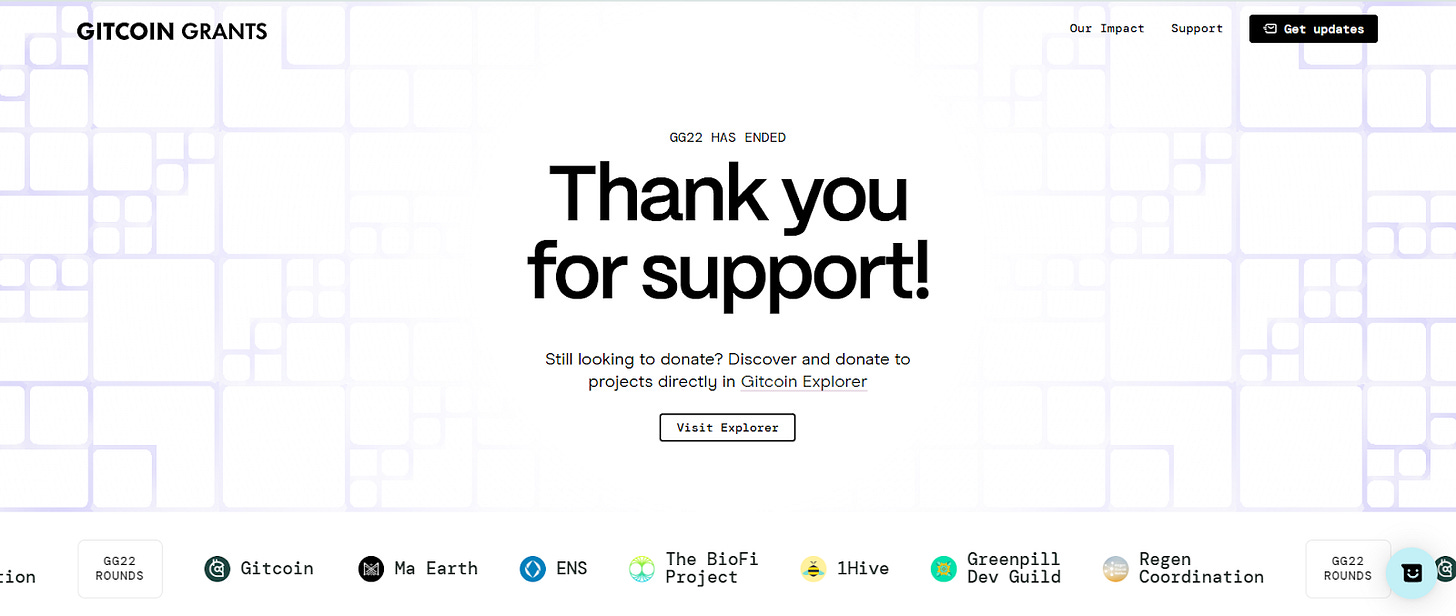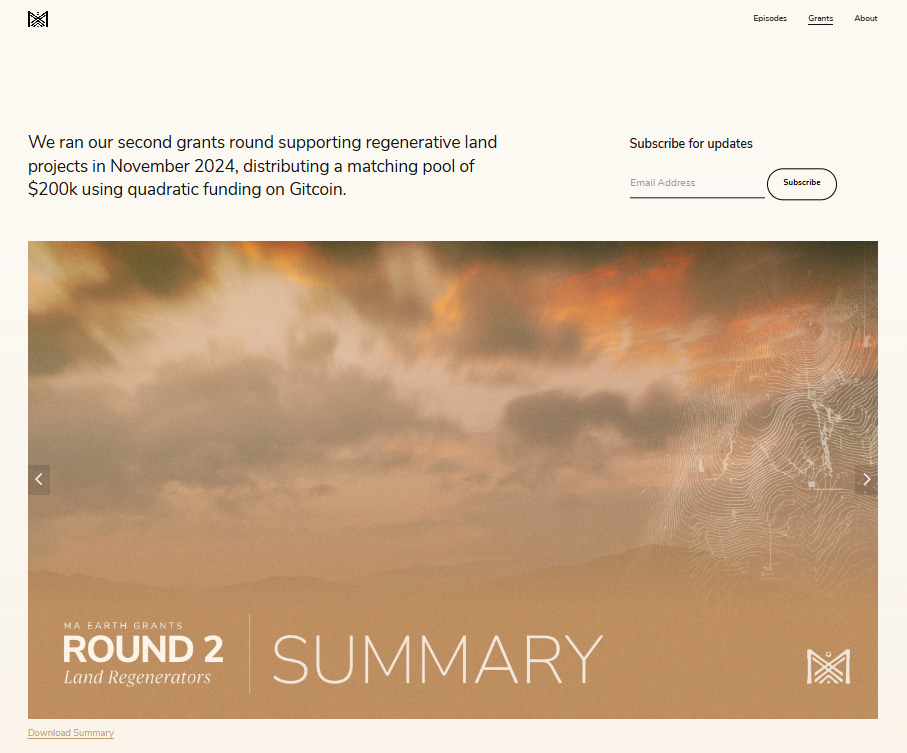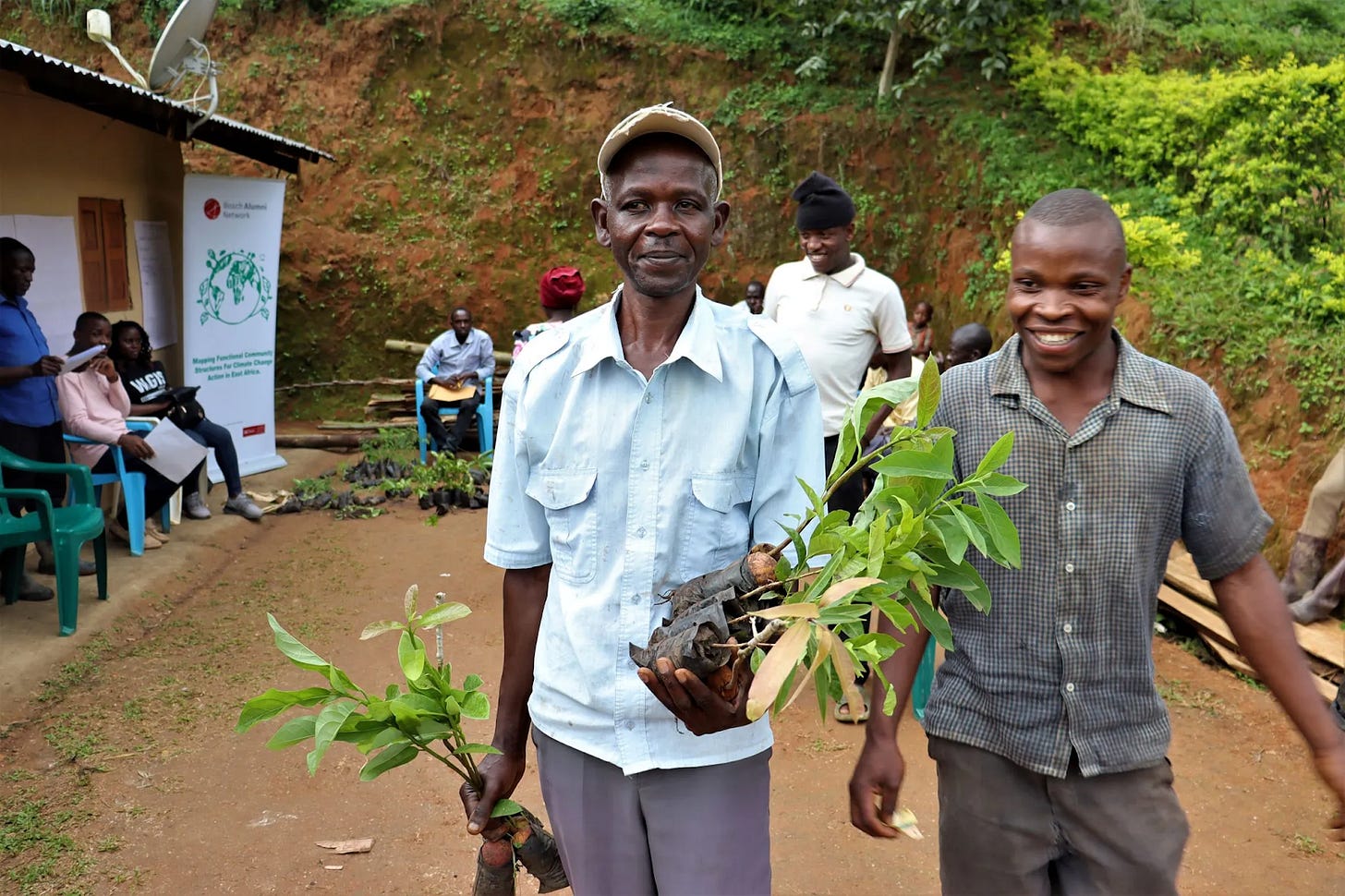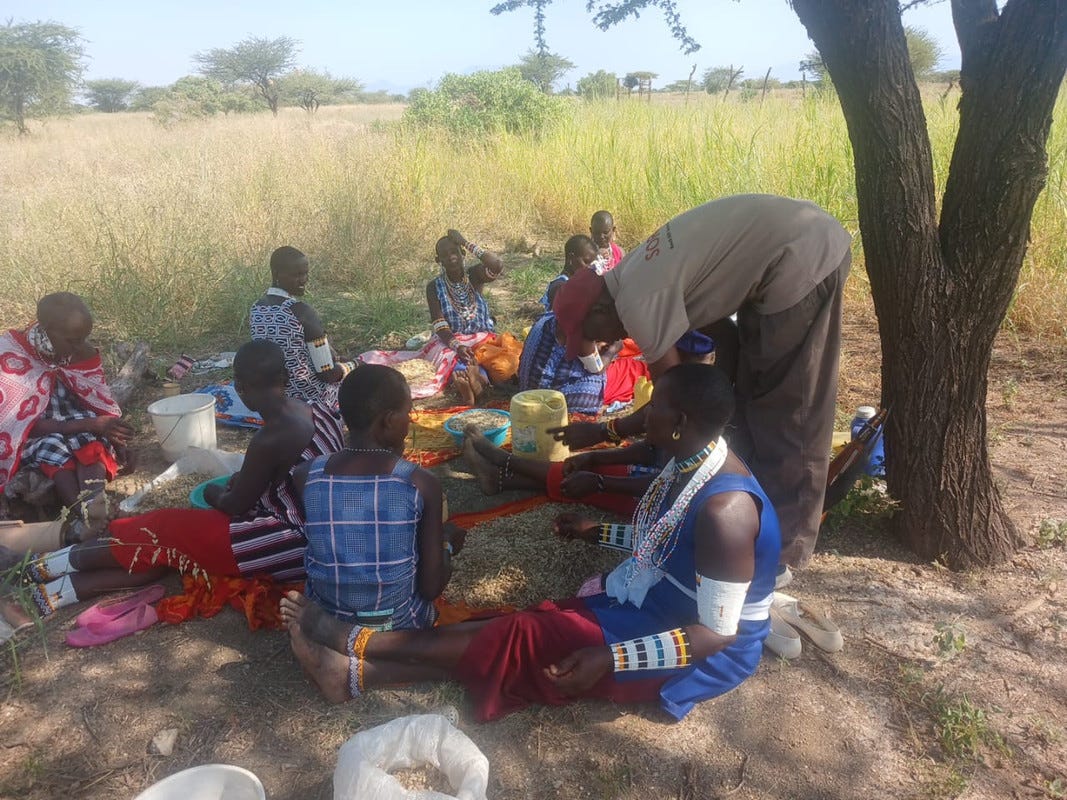Lessons Learned: Supporting Nature Stewards in Exploring Alternative Funding Through Gitcoin Grants
By Nurfatin Hamzah
At GainForest, we are proud to be part of the Web3 community, receiving funding from Gitcoin Grants to support our mission of protecting nature through innovation. This year, we extended the invitation to our community partners—grassroots nature stewards—to explore this alternative funding opportunity with us through our “Road to Gitcoin” accelerator.
For these nature stewards, funding is often the greatest challenge. Conventional funding models—while impactful—can be inaccessible, with lengthy applications, large grant amounts tied to strict timelines, and heavy reporting requirements.
Gitcoin Grants offered a different path: smaller, more frequent funding cycles designed to be flexible and community-driven. In previous cycles, we participated in the Climate Solutions Round, which focused on environmental impact projects. This year, we applied for the Ma Earth: Land Regenerators Round, another opportunity within Gitcoin’s ecosystem aimed at supporting climate and environmental solutions. Guided by past experiences, we supported our partners through the process and gained valuable insights into technology, accessibility, collaboration, and the communities we work with.
Lesson 1: Simplifying funding can drive participation
Gitcoin Grants break away from traditional funding norms by offering grants in smaller, more frequent cycles. Running every 3-4 months, these grants allow projects to apply, secure funding, and focus on their work without long-term commitments or rigid requirements.
For grassroots organizations, this flexibility is crucial. Instead of wrestling with complex applications, they can apply for funding as they need it, accomplish their goals, and reapply if necessary. This model meets them where they are, making funding simpler and focused on helping them get the job done rather than dealing with complicated requirements.
A glimpse of the Gitcoin Grants website—connecting supporters and projects worldwide. Explore more here.
Lesson 2: Lowering barriers through gradual onboarding
Gitcoin Grants hosts multiple thematic rounds, each with a unique focus, allowing communities to apply for funding based on their work. This time, we participated in the Ma Earth: Land Regenerators Round. Unlike other rounds that required participants to set up a Metamask wallet and enter the Web3 world just to apply, this round used a Google Form for initial applications. Only those accepted were asked to create wallets and explore the Web3 ecosystem.
This approach made the process far more accessible and less intimidating, especially for communities new to blockchain technology. By lowering the barriers to entry, Ma Earth successfully onboarded more participants who might otherwise have been hesitant to apply. It is a strategy we will continue advocating for as we support more partners in exploring Web3 opportunities.
Snapshot of the Ma Earth: Land Regenerators Round page, showcasing their initiative to support environmental projects through Gitcoin Grants
Lesson 3: Leveraging the Quadratic Funding Model
Gitcoin’s quadratic funding model determines how a shared matching pool of funds is distributed. This process prioritizes projects that engage the most supporters rather than simply raising the highest donations.
Breaking it down for our partners was crucial. We explained it like this: “Every donation is like a vote of support, and the more unique donors you have, the bigger portion of the matching pool you receive.” This shifted their focus from finding large donors to engaging their communities, turning fundraising into a collective effort.
Lesson 4: Rethinking the Quadratic Funding Model through an Impact Lens
However, we believe the quadratic funding model has a challenge: it often rewards projects based on perceived value, influenced by marketing, rather than the true impact of the project. Well-marketed projects can receive more funding, even if their real-world impact is lower.
While quadratic funding’s emphasis on the number of contributors is powerful, we believe it must be balanced with measuring true impact, especially for nature stewards. By focusing on real environmental outcomes, we can ensure funding supports projects that make a lasting difference, not just those with the best marketing.
We invite others in the Web3 community to join us in evolving the model to prioritize impact alongside engagement, ensuring that nature stewards are supported in their vital work.
Lesson 5: Accessibility in off-ramping funds
Technology plays a huge role in making funding accessible, not just in receiving it but in off-ramping—converting digital funds into usable local currency.
For our community partners who secured Gitcoin funding in Kenya and Uganda, the MiniPay app has been a game-changer. Previously integrated with the Opera web browser, MiniPay wasn’t very effective in Uganda but worked well in Kenya. Now, with its standalone app, it’s much more user-friendly and works seamlessly in both countries. It supports multiple off-ramping options, allowing users to send funds directly to bank accounts or popular digital wallets.
We also learned from our partners in this process. For example, we relied on local champions like Julius Sila in Kenya, who tested MiniPay and provided feedback on how it worked in practice. This feedback helped us refine the process, create guides, and teach other communities to use the same method. This collaboration highlighted the importance of learning from the grassroots and creating a cycle where knowledge flows both ways.
Lesson 6: Visibility and connection are key benefits
Beyond funding, Gitcoin Grants provided our partners with a platform to showcase their work. Sharing their projects during the donation period allowed them to connect with supporters, potential collaborators, and a global audience interested in their mission. These connections extended beyond monetary value—it offers new opportunities for collaboration and learning.
Bees and Trees Uganda incentivizes smallholder farmers in the Mt. Elgon region to reintegrate trees on their farms using agroforestry principles. This helps combat deforestation and supports sustainable livelihoods in an area affected by landslides and crop loss. Picture credit: Bees and Trees Uganda
Lesson 7: Encouraging Web3 communities to bridge the gap
As we continue to support nature stewards in exploring Web3 funding opportunities, we encourage more people and organizations in the Web3 community to join us in removing barriers. By collaborating, we can bring more nature stewards—especially from the Global South—into the Web3 ecosystem, where they can access alternative funding and opportunities.
The Global South broadly refers to countries in Africa, Latin America, Asia, and Oceania, which are generally less economically developed than those in the Global North (Europe, North America, and parts of East Asia). Despite being underserved in funding and infrastructure, the Global South holds vast potential for leadership in climate and environmental action.
To better reflect this potential, we encourage reframing the narrative by embracing the term Global Majority, which acknowledges that these regions represent the majority of the world’s population. While the term Global South focuses on disparities, Global Majority highlights the strength, resilience, and innovation inherent in these regions.
Decentralized technology bridges funding and data gaps, connecting the Global Majority with resources to amplify their environmental efforts. This aligns with Cosmolocalism, which links local and global communities through systems designed to deliver resources where they’re most needed. By shifting perspectives and leveraging Web3 tools, we can enable grassroots leaders from the Global Majority to drive meaningful environmental action and strengthen the global Web3 ecosystem.
South Rift Association of Land Owners (SORALO), one of our community partners that participated in Gitcoin Grants, is supporting women in the South Rift region in Kenya with a 20-acre grass seedbank project. This initiative supports ecological restoration and improves livelihoods by involving women in managing locally adapted grass species. Picture credit: SORALO
A collaborative path forward
Working with our partners on Gitcoin Grants has been an exercise in trust, patience, and mutual learning. We have focused on simplifying technical steps, using new methods like gradual onboarding, and making it easier for communities to convert funds. Through this, we have seen how making funding more accessible can really help grassroots initiatives succeed.
This process has also reminded us of the invaluable insights and expertise our community partners bring. By sharing their on-the-ground experiences, like testing tools and providing local insights, they’ve enriched our work and enabled us to better support others.
As we prepare for the next Gitcoin Grants round, we are excited to refine our approach and bring even more communities into this ecosystem. The growth of user-friendly technologies like MiniPay and the success of rounds like Ma Earth show that with the right tools and strategies, grassroots organizations can thrive in spaces that once seemed out of reach.Together, we can reshape how funding reaches the people safeguarding our planet.
Join Us in Supporting Nature Stewards
We invite friends of GainForest, scientists, members of the Web3 community, and anyone passionate about supporting nature stewards to connect with us. Join our Telegram Group to collaborate, share ideas, and contribute to this important work. If you're a nature steward and interested in exploring synergies or potential partnerships, feel free to reach out directly to community@gainforest.net.





